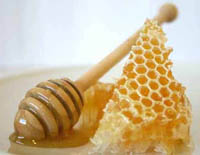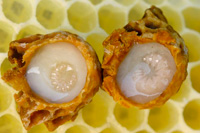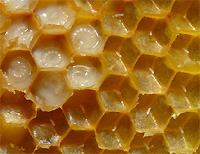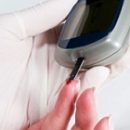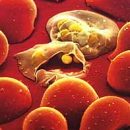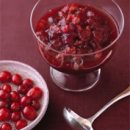Term «homeopathy» For now many dozen years for hearing. Its periodically uttered also sporn aunt from the films of the 30s - 60s. Treatment of a homeopath doctor (of course, unofficial) was already considered fashionable and prestigious at that time. But even now, when this method is officially recognized as an alternative to traditional medicine, non-specialists are very little know about his medicinal opportunities.
Content
At the origins of homeopathy
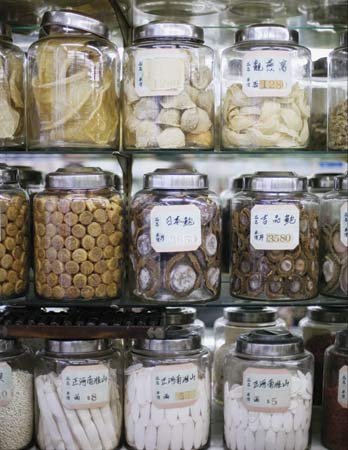 Homeopathy is a treatment method that is aimed at restoring the vital forces of the body by activating the processes of self-regulation using homeopathic drugs used in extremely small doses.
Homeopathy is a treatment method that is aimed at restoring the vital forces of the body by activating the processes of self-regulation using homeopathic drugs used in extremely small doses.
The ancestor of the homeopathic method is the German doctor Samuel Ganeman (1755-1843). He noticed that the symptoms of healthy person's poisoning of a fry tree (quinine) are amazingly similar to the symptoms of malaria, for the treatment of which the Kinein was used. Ganeman continued research in this direction and concluded: "If the chinin, causing the symptoms of malaria in a healthy person, can heal this disease, which means that the medicine acts as such. It curses the patient due to the ability to cause the same symptoms in a healthy".
For six years, the observation doctor and his followers experienced new substances on themselves, recorded and summarized the results of these experiments. As a result, with amazement noticed the similarities of the symptoms obtained as a result of taking medication with symptoms of many diseases. "The healing force of drugs is determined by their symptoms like symptoms of the disease, but superior to its strength" wrote later Haneman. As a result of the work done by Samuyl Ganeman, the foundations of homeopathy were formulated: the law of similarity - "Such is treated like" and the law of infinitely small doses, about the essence of which we will tell you below below.
For many years, official medicine did not recognize Haneman and his teaching, but the high performance of the method and the presence of followers brought their fruits. Homeopathy received recognition not only in Germany and almost across Europe, but also in the countries of the East.
"Three whales" Homeopathy
Law of similarity
Explain the essence of this pattern on the example of aloe. It is known that this plant drug in large doses has an annoying, ability to intestine, causing increased gas formation and liquid chair. But if the patient already exists these manifestations, for example, with colitis (inflammation of the gum mucosa), then aloe in small doses eliminates them. In other words, the processes that occur under the influence of large doses of the drug are treated in them as in doses of small (homeopathic).
The law of infinitely small doses
To understand its essence, you need to get acquainted with the technology of cooking a homeopathic preparation. There are several techniques here, but the classic is, naturally, the method of Haneman. The starting material is bred with water in a ratio of 1:10 or 1: 100 and intensively shaken, then the procedure repeats the desired number of times, sometimes the number of repeats reaching thousands. According to the law of physics (Avogadro's law), in such a solution there is no molecules of the active substance and, accordingly, from the point of view of the biochemistry, the drug cannot work. However, it is believed that with intensive shaking, the water structure of the starting material is observed, the replication of information about him. Indeed, the solvent (water) acquires new properties - this is confirmed by spectral analysis and other modern physical research methods. Moreover, at each new stage of breeding and shaking, the effect of the drug is enhanced and becomes more in-depth.
By the way, the Avogadro law uses most of the critics of homeopathy as his arguments. Successful results of treatment They explain the effect of placebo (pacifier), in which the improvement in the patient's health occurs due to its suggestibility. True, they do not explain the success of the use of homeopathic drugs in infants and animals.
Goring law, or "Disease on the contrary"
There is a third basic law of homeopathy, open by an outstanding follower of Haneman by Konstantin Gering and named afterwards. The essence of it is that with genuine cure, the reverse development of the symptoms of the disease occurs, and in the sequence opposite to the one in which they arose.
In addition, psychological (emotional) symptoms of the disease are prevailed: the patient improves the mood improves, the performance increases, the sleep is normalized, then physical: the work of individual organs is improved, headaches disappear. And the recovery process goes, as Gering himself described, "from organs more functionally important and deeper in the patient's body, to organs located more superficially". For example, patients suffering from bronchial asthma, at the beginning of their disease often had atopic dermatitis (allergic skin disease, characterized by rash, itching, bumps). For his treatment, a hormonal ointment was applied, after which these phenomena really disappeared. And after some time, the first attacks of bronchial asthma appeared. Usually, the patient itself does not associate these two allergic diseases. But during homeopathic treatment, the reverse development of events takes place: asthma attacks are becoming less and easier, up to their disappearance, and skin problems can return, and only leather are cured with further reception of homeopathic agents. In this case, we can talk about the reverse development of pathological processes in the body and cure.
How to become homeopath
In our country in 1995, the order of the Ministry of Health was allowed to use homeopathy in state medical and preventive institutions.
In order to become a doctor - homeopath and get the right to relevant practice in our state, it is necessary to first get a classic medical education: to complete the Medical Institute and pass the primary specialization in one of the main clinical specialties. Then you have to work for several years in accordance with the diploma and go through the primary specialization in homeopathy. And only after that, having received the appropriate certificate, you can begin the practice of a homeopath doctor. Moreover, every five years, such a specialist is obliged to undergo training courses - both by the main specialty and homeopathy.
Most homeopathy doctors regularly attend professional conferences to exchange experience with colleagues. In addition, today they have the opportunity to undergo training both from well-known Russian and foreign masters Homeopathy, Visiting their seminars and master classes.
What "hide" in balls?
The uninitiated people are often confused homeopathy with phytotherapy (herbal treatment). In fact, the homeopathic drug can be prepared from almost any substance, whether it is a plant, animal and human life products (for example, bile), or any element of the Mendeleev table.
Homeopathic medicines produced in the form of droplets, tablets, powders and pill (balls). The use of droplets may be limited in children - due to alcohol, which is used as a preservative. But the kids can gladly take sweet balls, in the manufacture of which the sugar is impregnated with a solution of the drug substance and dried, and then pills are formed from it. They can be of different size and not perfect round shape, but the number of active medicinal substances in them is always strictly equally. If you need to prepare a medicine from an insoluble base, for example, from minerals, it is tricious in powder (at least an hour) and mixed with milk sugar, after which either powders or tablets are made. For outdoor use, ointments and mixtures of drugs with glycerin are prepared.
Retreat from "Classics"
In modern homeopathy there are different schools and currents. One of these directions is homotoxicology, which is based on the postulate that all diseases depend on the accumulation of certain chemicals - homotoxins (poisons of the organism itself). According to supporters of this theory, cure diseases with specific drugs, which, by contacting homotoxins, will turn them into non-toxic compounds. This concept developed by Dr. X. Rekkeveg, based on classical homeopathy, where monopreparations are used (one active ingredient), but unlike it offers the use of complex homeopathic agents (consisting of several actors).
Consider this on the example of dizziness. Depending on the main symptom - the feelings of rotation, swing or accompanying nausea - classic homeopaths use a variety of monopreparations. If you combine several similar components in one tool, you can treat different types of dizziness, which is used in homotoxicology.
Complex homeopathic drugs that produce many foreign and domestic firms today, can be treated with allergic diseases, diseases of the joints, cardiovascular system, pathology of the digestive tract, the consequences of sports injuries and many other diseases. The names of the diseases in which these drugs are effective are written on packages. There also indicate the average doses of their reception and the duration of the intended course. Complex homeopathic drugs act quickly, as well as ordinary pharmacological, but retain all the positive aspects of homeopathy: a good compatibility with other methods and low side effects. Ready complex drugs can be bought in a pharmacy without a doctor's prescription.
Benefits of homeopathy
Naturality
The homeopathic preparation stimulates its own reserves in the body ("vitality") and eliminates the possibility of obtaining the therapeutic effect in one body or system at the expense of others. Thus, it is possible to avoid unwanted consequences associated with the use of conventional pharmacological drugs. In addition, the proposed homeopathic drug (with preserved reserves of the body) causes a gradual reverse development of the disease, even chronic.
Guarantee relief
The action of the prescribed drug is the more powerful and more efficiently, the more fully, it corresponds to the real picture of the patient's disease and identity. Often, a homeopath doctor is asked about what diseases can be treated with homeopathy? Almost any. It all depends on how long a person is sick, at what stage of development is the pathological process, as far as "Aggressive" There was a previous treatment and, finally, how preserved his internal reserves.
Of course, there are cases when the help of a homeopath is only a palliative (weakening the manifestation of the disease, but not eliminating its cause), especially in working with patients of older age groups. In such cases, it is most often not about cure, but about improving the quality of life and well-being, that is, about getting rid of the patient from individual unpleasant symptoms. As for working with younger patients, here we can talk about the prospect of the reverse development of the pathological process - - that is, about curing the disease.
Individual approach
For a homeopathist, the primary is the name of the disease, but an understanding of the processes (both physiological and psychological) flowing in the body of a particular patient. Therefore, with the same diagnosis, two different people will receive a different treatment. For homeopathy is not easy "Bronchitis" (inflammation of the mucous membrane of the bronchi), it is very important that it is specifically and under what circumstances he arose, there is something unusual during the disease and how this particular patient reacts to its illness.
At the doctor
Homeopath Patient talks about his problems at all as it happens in the cabinet of a precinct therapist or a doctor of narrow specialization. Usually, this doctor lasts at least one or two hours. At first, the patient tells about all his health problems, then the doctor who listened to the patient all this time, not interrupting, then clarifies the details important from his point of view, learns how the disease has arisen and developed, as they were treated, and what are the results and complications Therapia. After that, homeopath examines the patient, making the emphasis on the complaints, again clarifies the details, asks him about the lifestyle, habits and characteristics of character. All this is important for the selection of medicine. The doctor then systematizes the information obtained in a certain way and conducts the so-called reflectorization (adequates the information received about the patient with the data of a special reference book-Repertorium). Only after this is prescribed homeopathic medicine, which corresponds to this, concrete case.
We are treated at home
You can create a home first aid kit, equipped with homeopathic monopreparations. For example, Arnica, very well helps with bruises, bruises. During constipation and bloating, the likopodium 6, diarrhea from fruits, oily foods (no intestinal infection) decreases with tilsolla 3. High temperature is often reduced when taking an aconite 6 (if the patient does not sweat) or BelaDonna 6 (if the high temperature is accompanied later). With adenoids in the nose drip the Tui oil in the sixth dilution; In the presence of purulent plugs in almonds and angina helps Gear Sulfur 6, Liazesis 6; Sulfur 6 can be useful from guncrow and other skin problems.
Taking homeopathic preparations yourself, you should follow certain rules:
- drops or homeopathic krukka must be taken 30 minutes before meals or 30 minutes after it.
- The reception frequency depends on the value of the figure that is right behind the title of the drug. If it is 6 or 3, then the medicine should be drinking 6 or 3 times a day. In the case of acute disease, the drug is recommended to be taken often (sometimes every 15 minutes), but not long (3-5 days).
- Homeopathic balls are put in the mouth, under the tongue, until complete resorption and water are not driving.
- During treatment, it is necessary to avoid reception of coffee and menthol-containing substances (chewing gum, lollipops).
But with the independent use of homeopathic drugs it is worth remembering that their action will not always be deeply effective and accurate, because in this case the principle of an individual approach is not observed for homeopathy. After all, the recipe selected for a cold in general may not "to work" With a cold concrete. After all, one person cough can more torture in the evening, and the other - in the morning, one fell ill, because he stood on the cold wind for a long time, and the other was knocked. In each of these cases, an individual approach is required and "naught" medicine. Not to mention how different people have people, and how different they are experiencing their diseases.
Mechanical use of ready-made recipes is not always successful, and you should not blame in this homeopathy. It is better to turn to a homeopath doctor who specially compiled the wisdom of traditional medicine and homeopathy before meeting the patient in his office.



